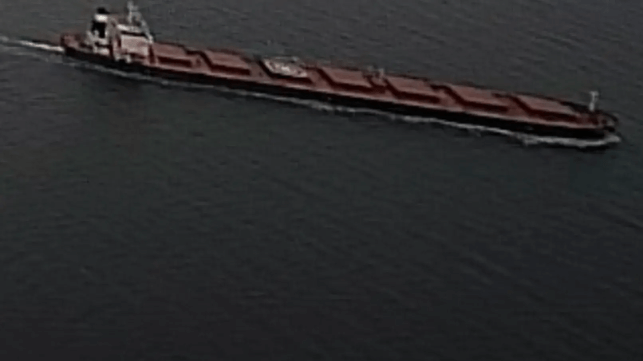WSJ: Chinese Ship Dragged Anchor for 100 Miles and Cut Two Cables

Swedish police investigators have completed their inspection of two fiber-optic cable breaks in the Baltic, and they have concluded that the Chinese bulker Yi Peng 3 severed them by dragging anchor for about 100 miles along the seabed, according to the Wall Street Journal. The next step in the investigation is to determine whether the crew accidentally overlooked hours of transit with one anchor on the bottom, a loss of speed, and several hours of AIS-dark operation; however, China, the vessel's flag state, has yet to allow Scandinavian authorities to board the vessel and question the crewmembers.
Previous reporting by public radio outlet DR has established that the Yi Peng 3's port anchor flukes were twisted in opposite directions, a rare form of damage requiring substantial force. AIS records put the ship in the area of both cable breaks at the time of loss of connection. Additionally, the vessel's captain is reportedly a Russian national, and the vessel's last port of call was Ust-Luga, just outside of St. Petersburg.
NATO member states have been plagued by sabotage incidents linked to Russian intelligence over the past year, including an attempted plot to assassinate the CEO of German defense contractor Rheinmetall, a key supplier to Ukraine's armed forces. "Russian intelligence services have gone a bit feral, frankly," warned British spy chief Richard Moore in September.
Investigators are now interested in whether Russian agents induced the crew of the Yi Peng 3 to drag anchor over European communications cables, according to the Wall Street Journal. "It’s extremely unlikely that the captain would not have noticed that his ship dropped and dragged its anchor, losing speed for hours and cutting cables on the way," observed a European investigator in conversation with the WSJ.
Europe's political leaders agree with that assessment. "No one believes that these cables were accidentally damaged," said German Defense Minister Boris Pistorius last week.
For now, a legal standoff has developed around Yi Peng 3. Despite physical access to the suspect vessel off the coast of Denmark and a heavy law-enforcement presence, the affected NATO nations have not boarded the Yi Peng 3 for an inspection - and are negotiating with China for permission. Yi Peng 3 is anchored less than one nautical mile outside of Denmark's territorial seas, and without legal justification, Danish authorities are reportedly unwilling to conduct a boarding of a Chinese-flagged ship.

that matters most
Get the latest maritime news delivered to your inbox daily.
Sweden, which was directly affected by the cable breaks and is leading the investigation, has asked for the Yi Peng 3 to voluntarily return to Swedish territorial seas. "From the Swedish side, we have had contact with the ship and China and stated that we want the ship to move towards Swedish waters," Swedish Prime Minister Ulf Kristersson said, emphasizing that he was not accusing the crew of any wrongdoing. "It's not the first time we've been hit by a cable break with a slightly unclear basis. We absolutely want to know what caused this."
The Yi Peng 3 incident was the second time in a year that a Chinese ship dragged an anchor along the Baltic seabed, causing millions of dollars in damage to subsea infrastructure. The last incident occurred in October 2023 when the Chinese-flagged boxship NewNew Polar Bear trailed an anchor along the bottom for hundreds of nautical miles, rupturing the Balticconnector gas pipeline and severing two fiber-optic cables. The anchor stock broke in two after hitting the pipeline, and the flukes were recovered nearby.
